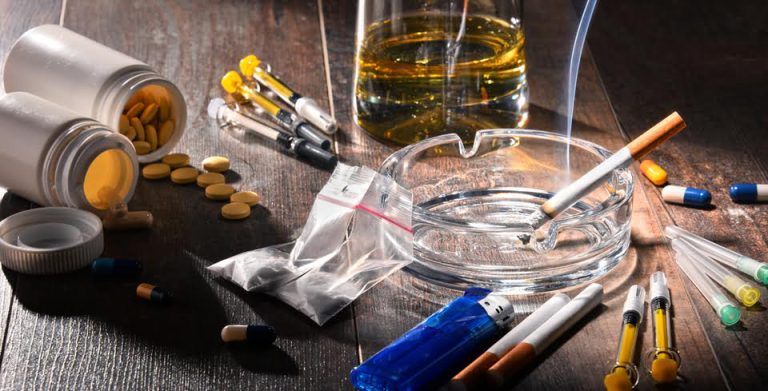Fortunately, most employers don’t want to shell out the money for blood testing their staff or job applicants. Even though THC is no longer detectable in blood about how long does weed stay in your system five hours after each use, it builds up over time in regular, heavy users. You already know that pot’s effects usually wear off after a few hours at most.
- Those with higher levels of fat content store cannabinoids more readily than leaner folks.
- Now, Michael has worked in the marijuana industry for over four years helping break down negative stigma and promoting safe cannabis practices.
- Blood tests for marijuana have a much shorter detection window compared to urine and hair tests.
- “If you have a detectable level of morphine in your system and you can show you have a prescription for it, then you have a defence.
Drug tests for cannabis — also known as marijuana, weed, or pot — measure THC and its metabolites. THC may be detected in blood or saliva as soon as 2-24 hours after last use. Urine and hair tests have a longer detection window, anywhere from 1–90 days after last use. Most urine tests only register positive at a THC-COOH concentration of at least 50ng/mL, because that’s the level that’s been recommended by the government. The study showed that only heavy users might exceed that cutoff point for more than 30 days, and that just happened occasionally.
How Can I Eliminate THC from My System?
Regular users could have THC consumption show up in their saliva for up to 3 days. Depending on the usage, chronic and heavy users could test positive on saliva tests for up to one week, although there are cases when metabolites could be detectable for even longer. Cannabis consumers have known for a while that the industry, access to the plant, and legality continue to grow by leaps and bounds while detection and testing technology struggles to keep up. What is needed is a technology that has the ability to detect a level of cannabis impairment within a specific period of time, because so far, there isn’t one. What cannabis “breathalyzers” and other drug panels do is to check for cannabis metabolites called THC-COOH, which can linger in the body for days or weeks depending on the frequency of consumption.
- Ongoing research is focused on developing reliable roadside tests, including marijuana breathalyzers and saliva tests for edible marijuana consumption.
- Even if you have been abstaining from direct cannabis use, false positives are not unheard of with urine testing.
- Chronic users and those consuming cannabis with higher levels of THC can expect the substance to stay in their bodies longer than others who consume infrequently or opt for low THC doses.
- Though not as common as a urine test, a person may be asked or required to take a blood test to detect marijuana in some instances.
- Hair follicle drug tests have the longest detection window of the most common test types.
More potent cannabis, which is higher in THC, may also stay in your system for longer. It has more than 100 metabolites, but the most significant ones are 11-OH-THC (11-hydroxy-delta-9-tetrahydrocannabinol) and THCCOOH (11-nor-9-carboxy-delta-9-tetrahydrocannabinol). Exercise will not significantly change the rate at which the body metabolizes THC. Without sensitive laboratory equipment, a person cannot reliably determine the strength of their cannabis.
What factors affect how long THC and its metabolites stay in your system?
Women generally have more body fat than men, lowering their metabolism rate. Hydrating more than normal won’t necessarily affect the results of a drug test, but dehydration may increase THC concentration. Regular exercise won’t change a drug test’s results, but exercising right before a drug test may increase the chance of a positive test. It passes through the liver https://ecosoberhouse.com/article/what-reasons-for-you-to-stay-sober/ multiple times and each time it does, much of it is converted into a number of other substances. The ones that matter most (for our purposes) are called THC-COOH and 11-OH-THC, and they don’t perform any important function. However, those metabolites are stored in the body’s fat, and remain there for a much longer period of time than THC itself stays in the body.
The experts also looked at the more rigorous 20ng/mL cutoff point, most often used by law enforcement and zero-tolerance employers and tougher to pass. At that level, THC metabolites can be detected for up to seven days in one-time users, and for 21 days or longer in chronic users. THC can be detected in the body for weeks after cannabis consumption, meaning users can face fines and loss of their licence, despite being unaffected by the drug.
How Much Fatty Tissue is in Your Body
A sample typically takes just over a hundred hairs from near the root and of the crown of a person’s head. The time it takes for a person to have a positive urine drug test result can vary from roughly three to 30 days, depending on their level of use and other factors. When someone uses marijuana, whether medicinally or legally, the drug remains in a person’s system beyond the time they feel its effects. While there are guidelines for how long the drug remains in a person’s body, the exact time the drug is detectable can vary. Depending on the type of test, the substance may be detectable the day a person uses the drug or for up to three months. Although conventional wisdom says at least 30 days, the answer is not straightforward.
Patience is key, especially during the delicate seedling stage, and manipulating growth through techniques like light deprivation can be crucial for outdoor cultivation. By respecting the natural progression of the plant and providing optimal conditions, cultivators can maximize yields and ensure a successful journey from seed to harvest. In outdoor settings, flowering occurs naturally as daylight decreases from summer to fall. Indoor growers can induce the flowering cycle by reducing the daily light exposure of marijuana plants from 18 to 12 hours. Vegetative plants benefit from nutrient-rich soil, particularly a high nitrogen content.
Marijuana Saliva Tests
By far, the urine drug test is most commonly used for drug screening in the workplace, but other types of drug tests are also being used, such as the saliva test. This is a quick and easy testing method, and much less risky than other types of drug screens since it’s done by testing the sputum your saliva glands produce and comparing it to the cutoff levels. Cannabis breathalyzer testing can detect recent marijuana use within 2-3 hours, providing a shorter detection window compared to urine, oral fluid, and hair tests. This makes it beneficial for assessing recent cannabis use and its potential impact on workplace performance and safety. Overall, understanding the detection windows for different cannabis tests is crucial for individuals and organizations implementing drug screening programs. By being aware of these timelines, individuals can make informed decisions regarding their cannabis consumption, while employers can ensure a fair and accurate screening process.

Because cannabis can sometimes stay in your system for such a long time, you can sometimes fail a drug test even if you haven’t smoked in weeks or longer. Even simple things like drinking water can help your body metabolize cannabis faster. When we drink water, we help our body eliminate toxins through the kidneys. The more you drink, the faster you will dispose of cannabis metabolites. However, Despite being the most accurate method, this is a large window of time.

You May Interested


Etichette Termoadesive: i segreti della personalizzazione
1 CommentCondominio: impianti termici centralizzati
1 Comment